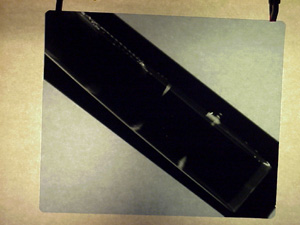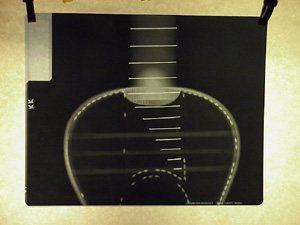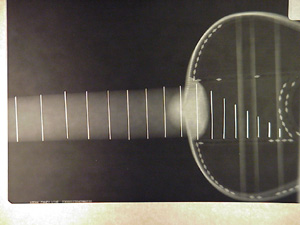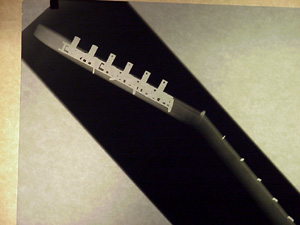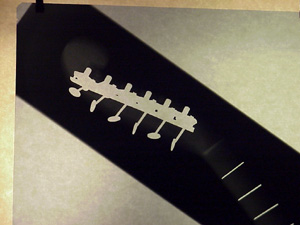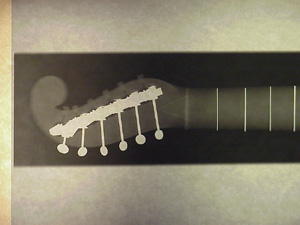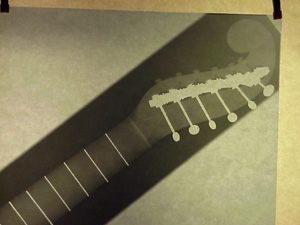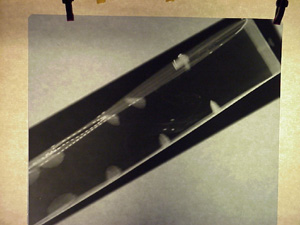Chapter 22
Historic European guitars from the Östberg collection.
Return to Classical Guitar Construction Home Page
Johann Georg Staufer in Wien,1805 - 1815. six string terz guitar.
Credit must first be given Naris Charachanyawong of Bangkok,Thailand for correcting the incorrect date of 1799 for this terz guitar by Staufer. This guitar was given to me about 1972 by decendants of the first owner of this guitar Miss Tauber.. Francisca Tauber von Taubershlag,was an opera singer who settled in Milwaukee,Wis. her father was "court artist in Bavaria under Ludwig 1862 --..Richard Wagner studied with him. She knew Franz List through a friend.
The guitar was in the attic of a carriage house in Milwaukee,Wisconsin which was later used as a garage.The date 1805 - 1815 puts Staufer at the age of 27 or older when he built this guitar. It has six strings and mechanical tuners. There is no date on the label nor signature on label or in the interior. The bridge area from the interior shows no plugged holes for five course and I feel all is original.
The images show mechanical tuners of iron with no apparent plating possibly they were browned or blued, six old gut and copper brass and steel strings the three wound strings are magnetic demonstrating a magnetic core,there is a copper winding at the end and brass with residue of a silver wash or plating on brass string windings.
The face of the guitar has been stained. Usually this is done to conceal stains or use dirt on the original unfinished face. The top , braces, interior lining is of picea abies/excelsia. This spruce is commonly called German spruce. Forest products laboratory in Madison ,Wisconsin said that abies and excelsia are the same species.The sides are Circassian walnut with interior spruce lining. All braces are spruce. The neck appears to be of beech ebonized. The top bridge ornament is of walnut also with toothing plane marks visible, possibly for visual effect. Two dowels/pins at each end of the bridge have been installed to stop the bridge from coming off. This repair is very old. Mother of pearl or clam shell diamond shaped inlays are used for decoration. Delicate banding with white and black purfling. Finish appears to be thin french polish. No signs of refinishing.
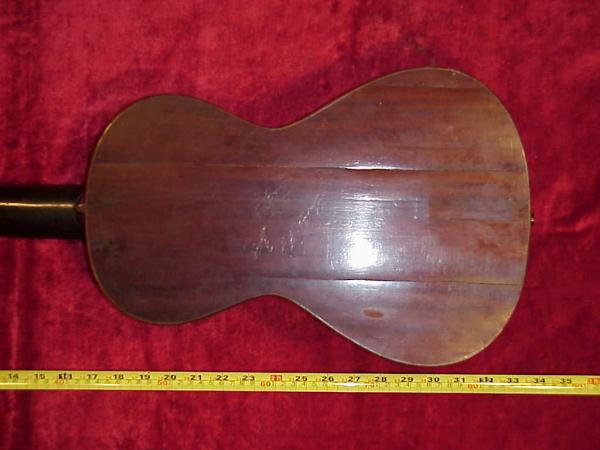
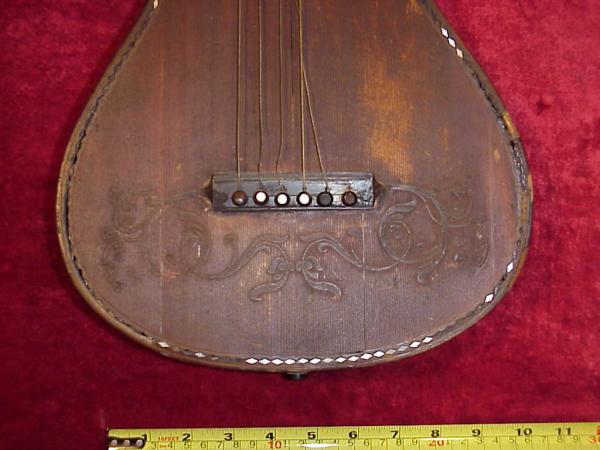

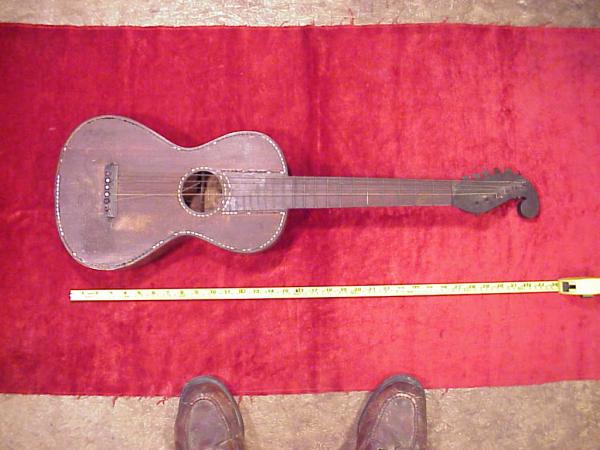
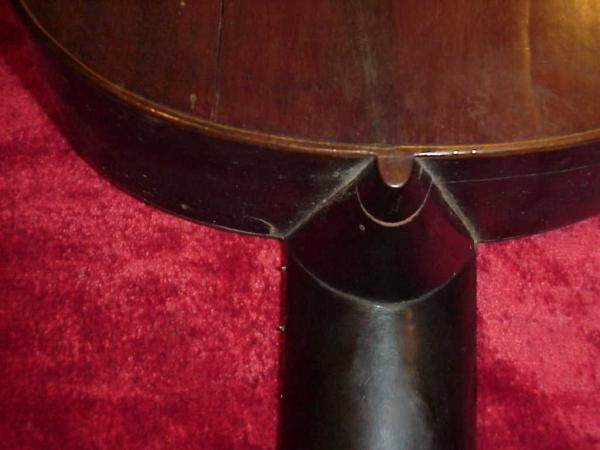
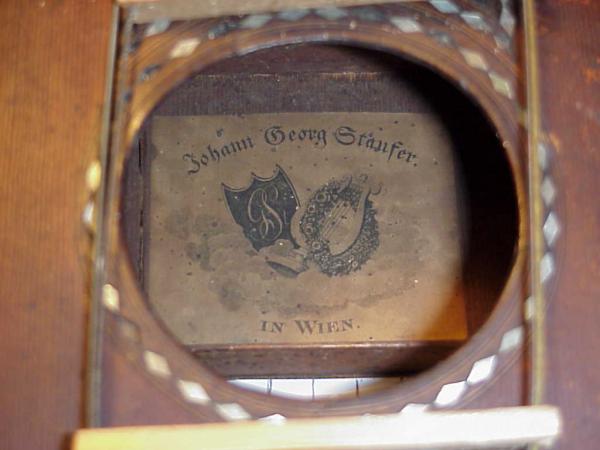
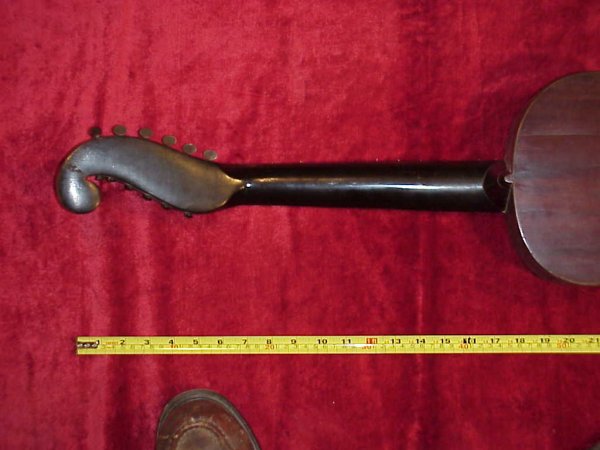
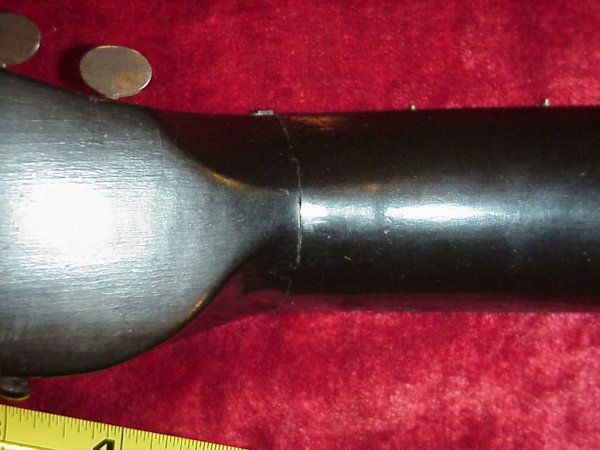

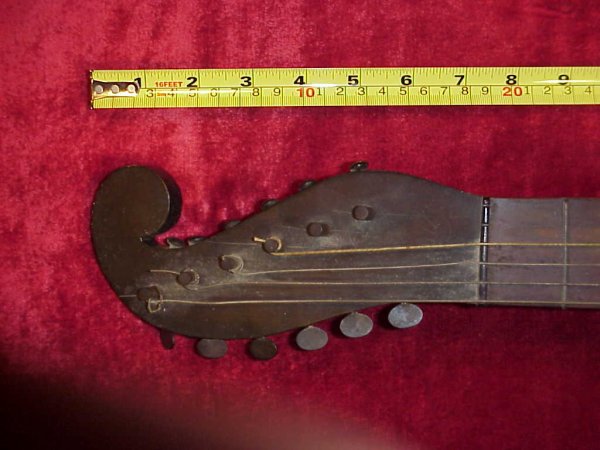
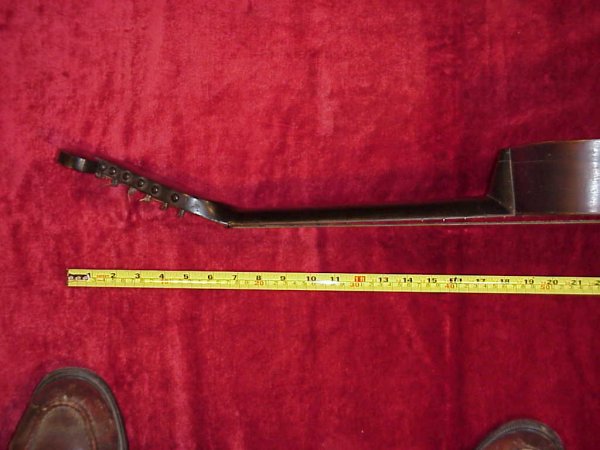
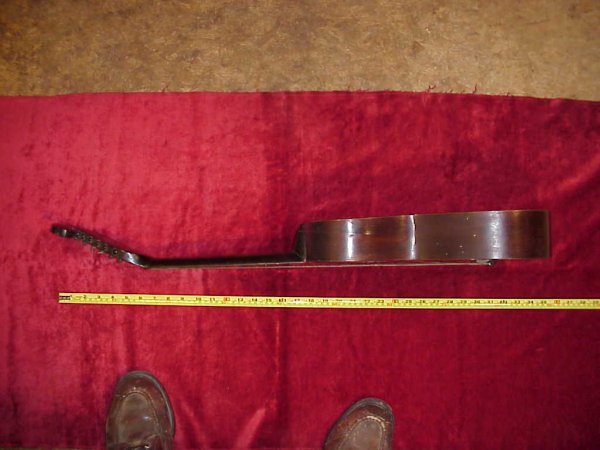
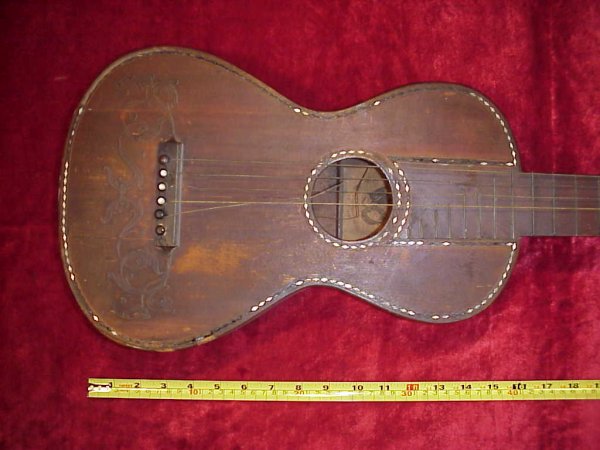
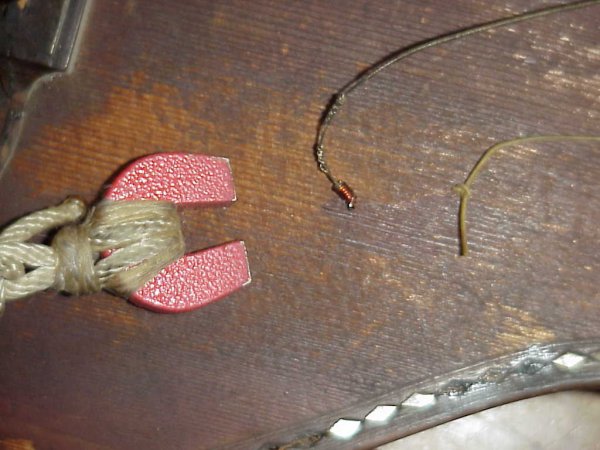
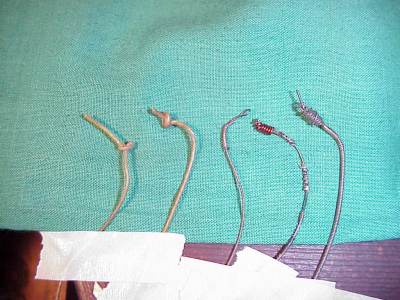
Johann Georg Staufer 1799 original string ends closeup and dimensions.
Beginning with the bass E.
E =
.046 Outside diameter.,internal wire .021, string wrap .018 O.D.,copper with silver plate.,short iron wrap .023.
A =
.040 O.D.,internal wire .018,string wrap .012 copper with silver plate.,short copper wrap .023 at pin end.
D =
.024 O.D.,internal wire .013,string wrap .005 copper with silver plate,string wrap over internal loop wrap.
G = Gut.
.039 to .043.
B = Gut.
.029 to 031.
E = Missing.
Scale or string length of Johann Georg Staufer guitar is,
22-1/8th inches or 562mm.
Nut to 12th fret is 11-1/64" or279mm.
Shrinkage of the wood of the top and neck has of course affected these measurments over the last 200+ years. The softer spruce of the top will shrink at a different rate than the beechwood of the neck and the walnut of the fingerboard.
Xrays of the internal structure of a circa 1805 - 1815 Johann Georg Staufer of Vienna guitar.
Credit for these Xrays must be given to Dr.Robert Schwartz who is also a good classical guitarist for facilitating the taking of these Xrays in the radiology lab at Advance Health Care 3003 W.Good Hope Road,Milwaukee,Wisconsin,U.S.A. Credit must also must go to the skilled Radiologist Herb Zimmers and Xray Technologist Linda Roden for working their magic to show the details of construction of this guitar.
Since this guitar was given to me in the early 1970's I have pondered details of the peghead joint. Now it is easily understood. There is, as shown on the Xrays a normal joint as used by C.F.Martin on his guitars made upon coming to America in 1833.. This joint was not visible due to a secondary facing put on the back of the peghead which conceals this.
When viewing the body from the face view the spruce lining on the sides appears angled. This is caused by the Xray lens. Herb Zimmers told me that the center of the Zray is not distorted but the outer edges are. I think of this as looking directly into a bowl the center being the focal point and the sides angled.
The interior of the back and sides are lined with picea abeis or German spruce. The top is also picea abeis. The exterior of the back, sides and bridge is circassian walnut. The neck is of ebonized beech wood. Internal braces picea abeis. The inlays are mother of pearl. The frets are silver. German silver now used for frets was invented circa 1828.
Recently Naris Charaschanyawong informed me that the date for this guitar by J.G.Staufer falls in the range of the years 1805 to 1815. I agree with him and feel the 1799 putchase date told to me by those that geve me the guitar is incorrect. Often oral tradition is inacurate as to specifics,dates etc.
Please note at the neck the light lines at the glue join of the peghead and also the light area where the bone nut is. Hide glue and bone show in this case as light opposed to the metal frets.
Click on the images for a larger version.

